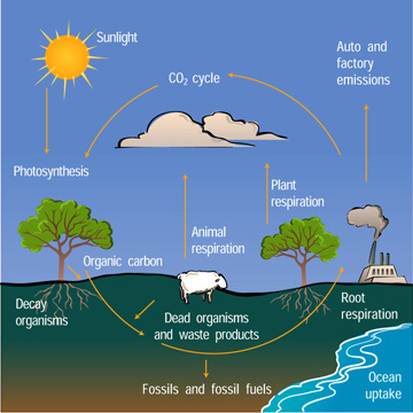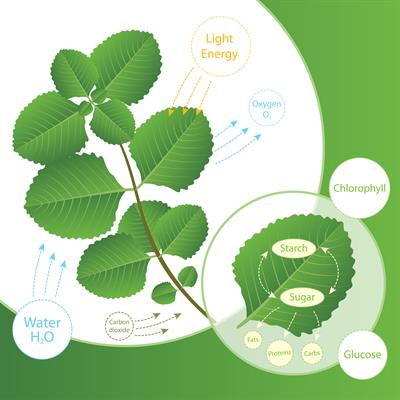PDF chapter test TRY NOW
Carbon is an essential element for all the life forms on the Earth. The amount of carbon present in the atmosphere is \(0.04\%\). Carbon occurs in different forms on earth. Charcoal, graphite and diamond are elemental forms of carbon. The combined forms of carbon include carbon monoxide, carbon dioxide and other carbonate salts.
Carbon is in a state of movement from one place to another. It can be stored in reservoirs and moves between reservoirs through processes that include:
- Photosynthesis
- Respiration
- Burning of fossil fuels
- Decomposition
The movement of carbon from one reservoir to another is called the carbon cycle.

Carbon cycle
Photosynthesis:
All living organisms contain biomolecules made of carbon like carbohydrates, proteins, fats and nucleic acids. Plants use carbon to prepare food, which animals then use for cellular growth. The atmospheric carbon dioxide enters the plants through the process of photosynthesis to form carbohydrates.
The process of photosynthesis involves the intake of carbon dioxide with the help of sunlight.
Carbohydrate, in the form of glucose, is produced in the reaction.

Process of photosynthesis
From the plants, carbohydrates are passed on to the animals or consumers like herbivores, carnivores, and omnivores in the ecosystem.
Important!
Nearly \(18.5\%\) of carbon is present in the human body.
Reference:
https://commons.wikimedia.org/wiki/File:Ecosystem_Respiration.jpg
